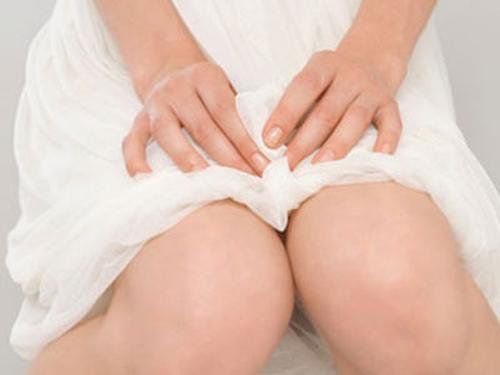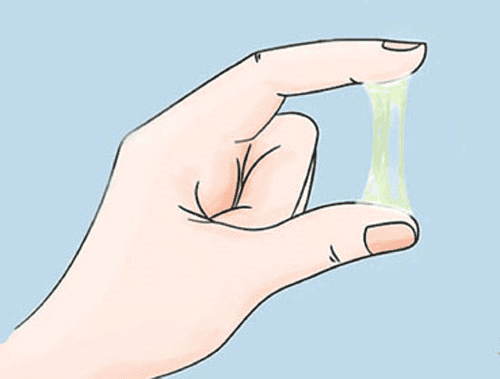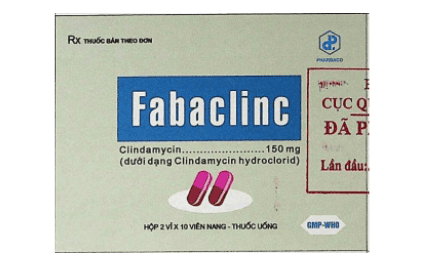This is an automatically translated article.
Clindesse has the active ingredient Clindamycin, an antibiotic in the Lincomycin group. It is used to treat bacterial vaginosis in non-pregnant women.
1. What is Clindesse?
Clindesse is a cream containing the main active ingredient Clindamycin, which is used to treat vaginal infections (bacterial vaginosis) in women who are not pregnant. The effect of Clindesse is to inhibit the growth of some bacteria that often cause vaginal infections. Clindamycin is an antibiotic of the Lincomycin group, which binds to the 50S subunit of the ribosome, thereby inhibiting bacterial protein synthesis. Clindamycin is bacteriostatic at low concentrations and bactericidal at high concentrations. The mechanism of bacterial resistance to clindamycin is RNA methylation at the 50S subunit of the bacterial ribosome.2. Effects of Clindesse in the treatment of diseases
Clindesse is used in the treatment of bacterial vaginosis, e.g. Haemophilus vaginitis, Gardnerella Vaginitis, nonspecific vaginitis, Corynebacterium Vaginitis or vaginitis caused by Corynebacterium Vaginitis. anaerobic in non-pregnant women
3. How to use Clindesse
The recommended dose of Clindesse is to be applied once at any time of the day. Use Clindesse as directed by your doctor. Check the label on the medicine for exact dosing instructions. Clindesse cream is for vaginal use only. How to use Clindesse medicine as follows:
Wash your hands before and after using Clindesse. The Clindesse comes with an applicator for applying the medication. Do not remove the protective cap from the applicator before use. Do not warm the application area before use. To use Clindesse, hold the applicator tube firmly and pull the ring back to fully extend the piston. Gently insert the device into the vagina. Push the plunger to push the cream out. Remove the applicator from the vagina and throw it away. Clindesse is a single-use cream. If a medication is forgotten, the patient can use it as soon as he remembers. Avoid contact with eyes as burns and irritation may occur. If the medicine gets into eyes, immediately flush eyes with large amounts of water.
4. Clindesse side effects
Possible side effects from taking Clindesse include:
Fungal infection, genital itching or burning, inflammation or pain, vaginal discharge. Severe allergic reaction with symptoms of rash, itching, trouble breathing, chest tightness, swelling of the mouth, face, lips or tongue. Bleeding/mucus in stool, diarrhea. Pain during sex, cramping or stomach pain, white vaginal discharge.
5. Notes when using Clindesse
Do not use Clindesse if the patient is allergic to any of the ingredients in the formulation or to Lincomycin, the patient has Crohn's disease, antibiotic-associated colitis, or ulcerative colitis. Certain medical conditions can affect how Clindesse works. Inform your doctor or pharmacist if you have any medical conditions including: are pregnant, plan to become pregnant or are breast-feeding, are taking any prescription or over-the-counter medications, herbal or dietary supplements, allergic to drugs, foods, or other substances, gastrointestinal disease or diarrhea Drug interactions: Because Clindamycin is very little absorbed into the bloodstream, the risk of an interaction is minimal. with other drugs is very low. Do not have sex or use other vaginal products, such as tampons or douches, while using Clindesse. Clindesse cream contains mineral oil that can weaken latex products such as condoms and diaphragms. Therefore, do not use a condom or diaphragm within 5 days of using Clindesse. Patients should use other methods of contraception during this time. Contact your doctor immediately if stomach pain, cramping, severe diarrhea, or bloody stools occur. Do not treat diarrhea without first checking with your doctor or pharmacist. Be sure to use Clindesse exactly as indicated. Bacteria can also become less sensitive to the drug if used incorrectly. This can make the infection harder to treat in the future. Long-term or repeated use of Clindesse may cause secondary infections. Inform your doctor if signs of a secondary infection occur. Pregnant women: Before taking this medicine, it is necessary to discuss the benefits and risks of using this medicine while you are pregnant. Lactation: It is not known whether Clindesse passes into breast milk. If you are or will be breast-feeding while using this medicine, consult your doctor. Store Clindesse at 25 degrees Celsius. Short-term storage is allowed at temperatures between 15 and 30 degrees Celsius. Store in tightly closed containers, away from heat and light sources. Keep Clindesse out of the reach of children and away from pets. If symptoms don't improve or if they get worse, see your doctor. Above is the overview information about Clindesse. Because Clindesse is a prescription drug, patients should not use it on their own, but need to contact a specialist directly for a suitable prescription to ensure safety for health.
Reference source: drugs.com













